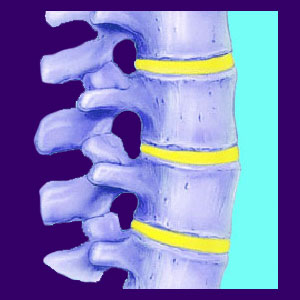
The vertebral column is also known as the spine, backbone or the spinal column. This wondrous structure is crucial to human development and has provided mankind with certain evolutionary advantages over other species of mammal, including the ability to stand upright.
The spinal column typically consists of 24 vertebral bones, along with 2 fused areas of bone called the sacrum and the coccyx. The human spine is truly a marvel of design and efficiency. Think about all the incredible things we can do with our bodies and then attribute each and every one of them to the backbone.
If our spines had not evolved along with us, we would certainly be very different creatures today. The upright spine is one of the major separations between our species and virtually all others. This fact-filled essay celebrates the evolution of the human spine.
Anatomy of the Vertebral Column
The spinal column runs through much of our body, from the skull down to the bottom of our torso.
The normal spine should be straight side to side, but curved repeatedly from front to back. These curves help to support the weight of our bodies, as well as transfer and distribute force across the spinal structures.
In between the vertebrae are intervertebral discs which also act as shock absorbers and allow movement of each vertebral segment of the spine.
The lumbar and cervical areas are designed for maximum mobility and flexibility, while the thoracic spine is designed of maximum support and protection.
Human Spine Information
Individual vertebrae are numbered from the top down and correspond to the spinal region in which they exist.
There are 7 vertebrae in the cervical spine, 12 in the thoracic spine and 5 in the lumbar spine.
The sacrum consist of 5 fused vertebrae forming one solid and incredibly strong piece of bone, while the coccyx consists of 3 to 5 fused vertebrae which form the remnants of a vestigial tail no longer seen in humans.
The vertebral bones get progressively larger from top to bottom, cervical to lumbar, with only a few exceptions. After the lumbar region, the vertebrae get smaller in size once again.
Vertebral Column Facts
Although the spinal column is the source of the majority of back pain diagnoses and theories, research has shown that structural issues are rarely the true underlying reason for dorsopathy.
The spine is an incredibly strong and adaptable structure and the many irregularities which exist in the vertebral bones and intervertebral discs are often coincidental to any pain which occurs. If your pain has been blamed on some spinal problem (and whose hasn’t?), but you have not been able to find relief from a variety of indicated treatment options, you might be smart to reconsider the validity of the purely structural diagnostic conclusion.
Recently, some high-profile medical organizations clearly spelled out new guidelines for physicians diagnosing back pain, including a major change instructing doctors not to assume structural abnormalities found on diagnostic testing are the sources of pain. Furthermore, research shows that most spinal irregularities are not statistically linked to the incidence of back pain. These are crucial concepts to consider for all dorsalgia patients.




